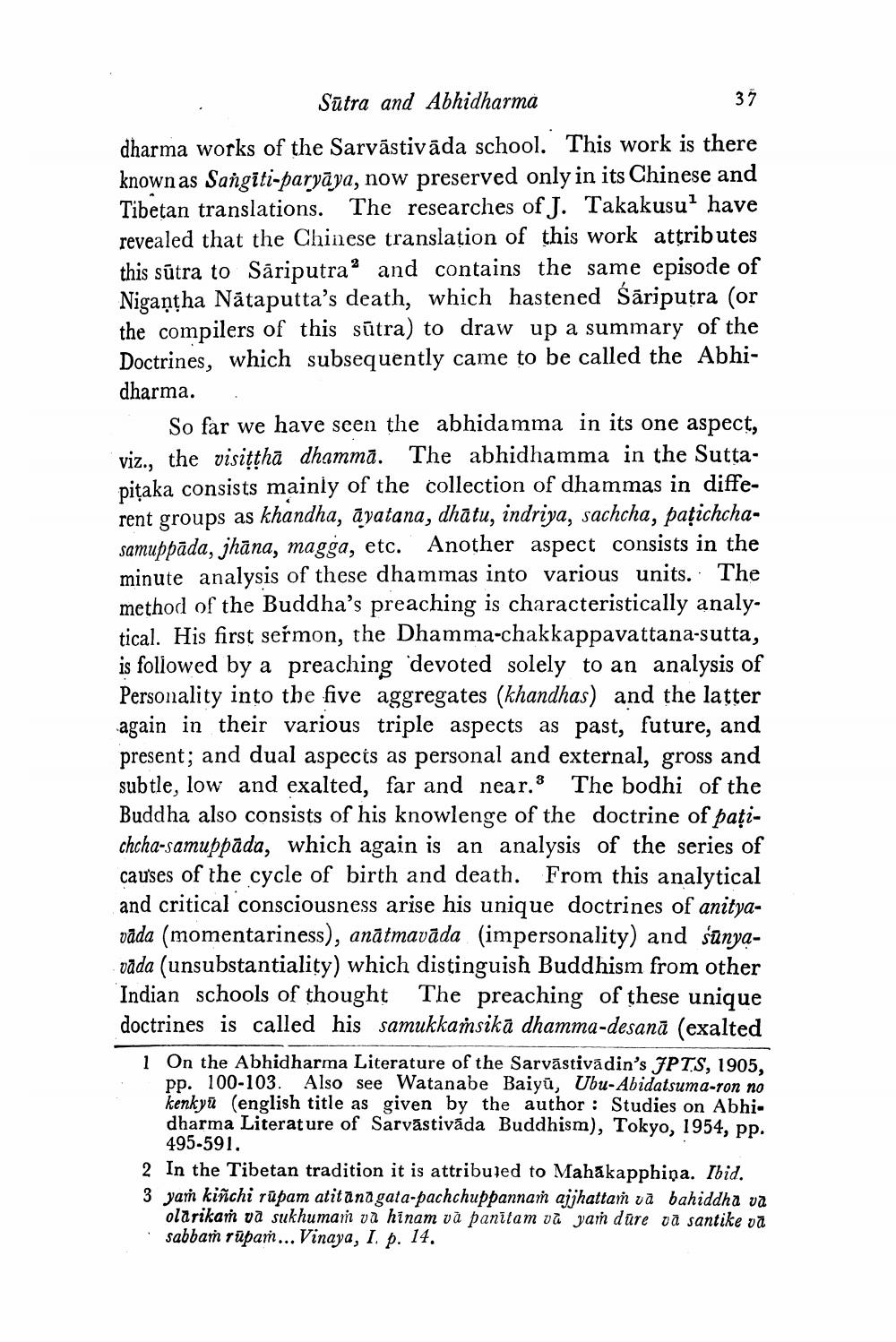________________ Sutra and Abhidharma 37 dharma works of the Saryastivada school. This work is there known as Sangiti-paryaya, now preserved only in its Chinese and Tibetan translations. The researches of J. Takakusu' have revealed that the Chinese translation of this work attributes this sutra to Sariputra" and contains the same episode of Nigantha Nataputta's death, which hastened Sariputra (or the compilers of this sutra) to draw up a summary of the Doctrines, which subsequently came to be called the Abhidharma. So far we have seen the abhidamma in its one aspect, viz., the visittha dhamma. The abhidhamma in the Suttapitaka consists mainly of the collection of dhammas in different groups as khandha, ayatana, dhatu, indriya, sachcha, patichchasamuppada, jhana, magga, etc. Another aspect consists in the minute analysis of these dhammas into various units. The method of the Buddha's preaching is characteristically analytical. His first sermon, the Dhamma-chakkappavattana-sutta, is followed by a preaching devoted solely to an analysis of Personality into the five aggregates (khandhas) and the latter again in their various triple aspects as past, future, and present; and dual aspects as personal and external, gross and subtle, low and exalted, far and near. The bodhi of the Buddha also consists of his knowlenge of the doctrine of patichcha-samuppada, which again is an analysis of the series of causes of the cycle of birth and death. From this analytical and critical consciousness arise his unique doctrines of anityavada (momentariness), anatmavada (impersonality) and sunyavada (unsubstantiality) which distinguish Buddhism from other Indian schools of thought The preaching of these unique doctrines is called his samukkamsika dhamma-desana (exalted 1 On the Abhidharma Literature of the Sarvastivadin's JPTS, 1905, pp. 100-103. Also see Watanabe Baiyu, Ubu-Abidatsuma-ron no kenkyu (english title as given by the author : Studies on Abhidharma Literature of Sarvastivada Buddhism), Tokyo, 1954, pp. 495-591. 2 In the Tibetan tradition it is attributed to Mahakapphina. Ibid. 3 yam kinchi rupam atitana gata-pachchuppannam ajjhattam va bahiddha va olarikan va sukhuman ca hinam va banatam va van date va santike va sabbam rupam... Vinaya, I. p. 14.




